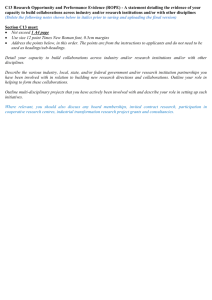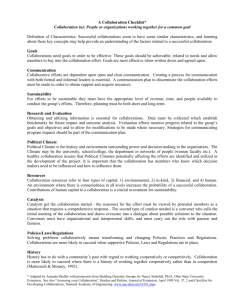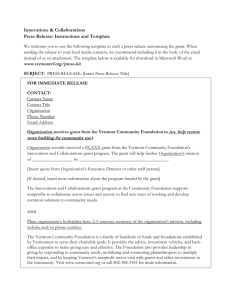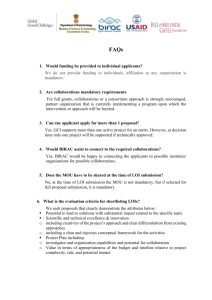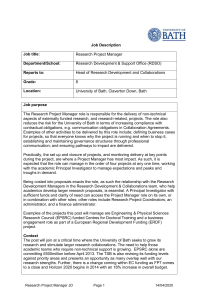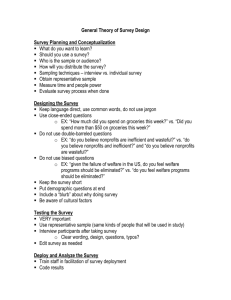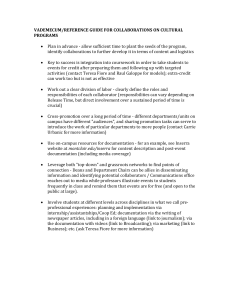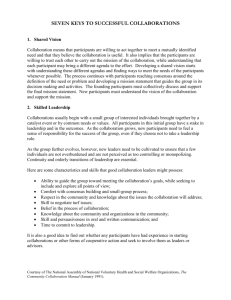Strategic Memo 3
advertisement
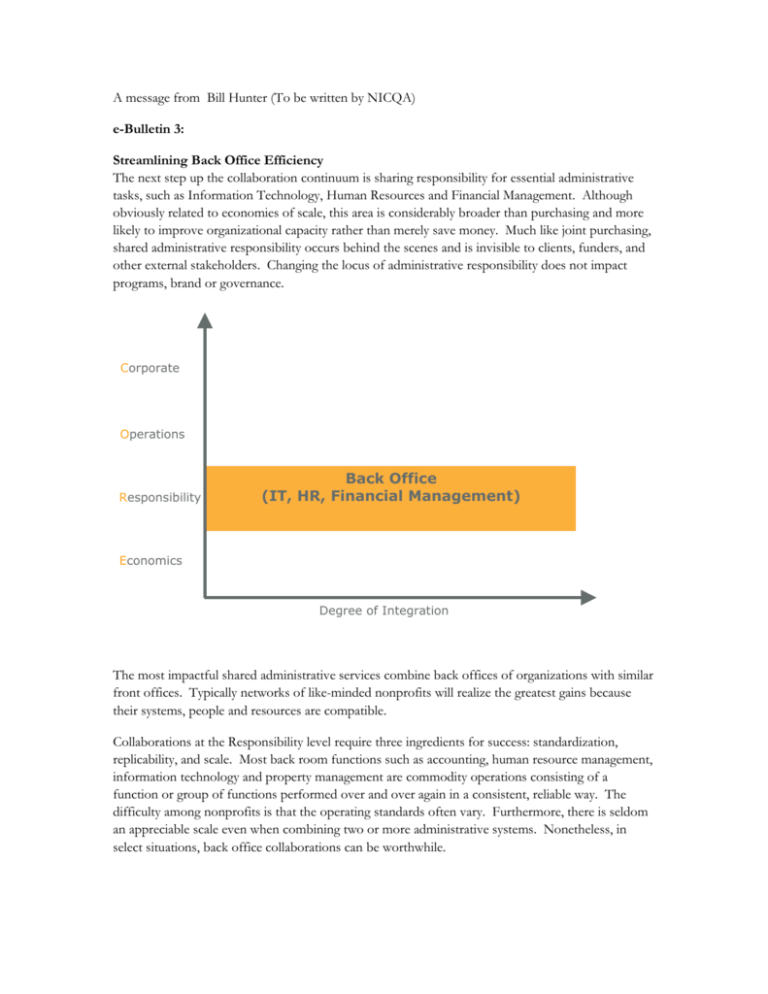
A message from Bill Hunter (To be written by NICQA) e-Bulletin 3: Streamlining Back Office Efficiency The next step up the collaboration continuum is sharing responsibility for essential administrative tasks, such as Information Technology, Human Resources and Financial Management. Although obviously related to economies of scale, this area is considerably broader than purchasing and more likely to improve organizational capacity rather than merely save money. Much like joint purchasing, shared administrative responsibility occurs behind the scenes and is invisible to clients, funders, and other external stakeholders. Changing the locus of administrative responsibility does not impact programs, brand or governance. Corporate Operations Responsibility Back Office (IT, HR, Financial Management) Economics Degree of Integration The most impactful shared administrative services combine back offices of organizations with similar front offices. Typically networks of like-minded nonprofits will realize the greatest gains because their systems, people and resources are compatible. Collaborations at the Responsibility level require three ingredients for success: standardization, replicability, and scale. Most back room functions such as accounting, human resource management, information technology and property management are commodity operations consisting of a function or group of functions performed over and over again in a consistent, reliable way. The difficulty among nonprofits is that the operating standards often vary. Furthermore, there is seldom an appreciable scale even when combining two or more administrative systems. Nonetheless, in select situations, back office collaborations can be worthwhile. ‘Circuit Riders’ One of the simplest forms of Responsibility collaborations – and therefore one requiring the least integration – is a variation on the early American institution of circuit-riding judges. Especially in rural Western territories, judges would visit settlements on a regular schedule when no single community could support a full time judge. Today, particularly for small nonprofits, there are professionals such as bookkeepers or technology specialists who act as circuit riders – Tuesday is the ballet; Wednesday the museum. These professionals tend to work through a series of haphazard relationships. One subtle difference between alliances and circuit riders is that in the former the initiative comes from the employing organizations, while informal circuit riding arrangements are usually set up by the professional. In any event, shared back room staffing represents a valid, if largely informal, form of collaboration. High Integration Collaboration Models Some of the more intriguing administrative collaboration models were created in the United Way movement. In the latter part of the 90’s, national companies who had encouraged their local branches or divisions to participate in United Way campaigns began to make clear that the movement had to facilitate a standardized electronic system for collecting and distributing campaign contributions across the country. National companies with hundreds of local operations wanted a centralized system for running the campaigns and accounting for contributions. This contradicted the ethic behind the approximately 1,200 fiercely independent local United Ways, but the demand was persistent. A period of experimentation ensued during which at least two innovations arose from the United Way, both initiated and nurtured locally. One was an electronic system that provided standardized but locally-branded campaign tools for participating United Ways. The other was a series of ultimately productive local experiments in standardizing pledge management and, eventually, back room operations. Each of these innovations is what we would term an alliance on the Responsibility level of the C.O.R.E. Continuum. More integrated back room collaborations are also possible. A community health center and a local community-based organization collaborated around a shared back room operation that provided most of the financial and technology supports each needed. Co-locating with shared services is another way to create a more integrated Responsibility level collaboration. In this model, nonprofits not only rent space in the same building, but share administrative services such as copying and information technology support. These situations also bring the added value of physical proximity for a group of likeminded organizations in a way that could result in serendipitous collaborations beyond the stated intent. In reaction to the recession of 2008 there was an amplified interest in administrative collaborations. This was a normal response to economic challenges. Nonprofit boards and administrators often seek to find savings in the least painful way, which is usually in administrative spending. The problem is that back office collaboration is virtually guaranteed to fall short of the desired savings goal. The reason lies in the mathematics of administrative spending. When two groups find savings in some line item of administrative spending, it is likely to be modest – a 10% savings would be a respectable result. But a 10% savings on a line item that itself is no more than a small portion of the total administrative spending amounts to a fraction of a fraction of a fraction. Every ounce of savings helps, of course, but this is small reward for a big effort. Collaboration is a powerful tool, but the effort should match the outcome. Interaction: We would like to identify collaborative models of interest to you. If you need improvement in any of the following areas, back office collaboration may be valuable to your organization. (email? Web survey?) Rate the accuracy of the following statements. Select one of the following check boxes for each question: We fulfill this guideline and do an excellent job in this area. No further work is needed. You have adequate levels of staffing coverage, systems, and infrastructure to satisfactorily carry your desired level of IT, HR and financial operations to advance the CAA’s mission. The back office staff members have solid professional grounding in their specialty and work well to support program and fund development staff. The entire staff adheres to reporting policies. Leadership has sufficient knowledge of administrative operations and results to make informed resource allocation decisions. The administrative staff participates in communication among the board, the organization We meet the guideline to some extent, and do a respectable job in this area. However, either more work is needed meet the guideline in full, or more information is needed to make an accurate assessment. management, and auditors to promote an open exchange of ideas and information about financial and operational matters. There is a written multiyear systems plan for upkeep of operations. Administrative performance ratios are compared to peer organizations and expenditures are moderate.
